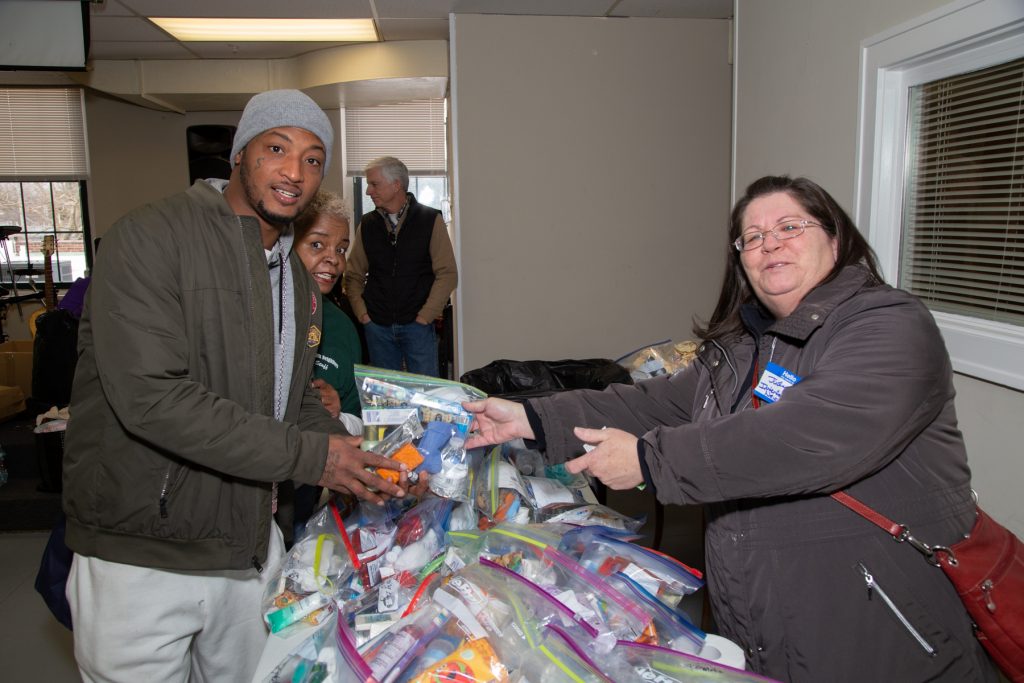Every one of the 23 Hope Centers in Greater New Jersey touches directly or indirectly on concerns facing homeless people in our communities. These Hope Centers, as well as many GNJ congregations, offer services to address the needs of homeless people including: feeding programs, job skills, addiction services, hospitality centers and children services. GNJ congregations know that the need is great, what is unknown is the true scope of the problem.
On January 29, A Future With Hope will show their solidarity to a program known as the “point in time count,” an annual statewide effort first mandated by the U.S. Department of Housing and Urban Development (HUD) in 2005 to identify homeless people so that assistance programs can be tailored specifically to these people with the intent of helping them.
“This is a great opportunity for local churches to get involved in something that transforms communities. It’s really important for this count to be done each year and for it to be done well,” said
A Future With Hope’s Tara Maffei, who will be on hand that day to offer her help. “It takes many hands, and faith-based organizations are a perfect fit for this. But they need to contact their county coordinators,” she added, noting that she has a list of coordinators.
Because so many ministries address these populations, churches make for valuable volunteers in the counting process that looks for homeless in many places including emergency shelters, transitional housing programs, safe havens, on the streets and under bridges.
Last year on the night of January 22, a total of 8,864 men, women and children in 6,748 households throughout New Jersey were identified as experiencing homelessness. In Monmouth County alone, there were 360 people from 254 households counted. Fifty-four of them were living unsheltered.
For reasons ranging from job loss and mental illness to addiction and abuse, homelessness impacts young and old alike.
Each county is responsible for their own count. For those counties not wanting to complete the process on their own, the nonprofit, Monarch Housing Associates (monarchhousing.org/ ) is there to help.
During these counts, communities are required to identify whether a person is an individual, a member of a family unit or an unaccompanied youth under the age of 18 or age 18 to 24. In addition, communities must identify if a person is chronically homeless, indicating long-time or repeated homelessness and the presence of a disability.
As part of these counts, a formal but simple questionnaire must be filled out for every homeless contact by a local volunteer. A training session is provided for volunteers to streamline the process.
Some organizers use the count as an opportunity to provide resources such as warm clothing, meals, medical screening or other needs that can be delivered to those in need while they wait to meet with the surveyors. Things like warm socks, small bags of hygiene items, clean coats, gloves, scarves, hats and waterproof boots are recommended.
Counties can have “drop in sites” in various places where those in need are invited in to receive those resources, while other volunteers go out into the community to handle the same jobs, Maffei, a Hope Center Developer, said.
“Each congregation who feels they have a gift to lend should be sure they are coordinating with local county officials,” she added.
In addition to volunteers and resources, locations are needed, as some counties like to set up fixed sites where those in need can come in, warm up, have a hot meal and meet with volunteers. Warm meals, bag lunches, snack foods like protein bars, juice boxes, hot coffee and bottled water are always useful donations for those in need who come forward to be counted.
“Helping hands are needed for the day – and in some places, for the days leading up to the count,” Maffei added. “Each county has a slightly different effort, plan and resources.”
Once complete, this data allows policymakers and program administrators to delve into where the need is greatest and work toward ending homelessness. Collecting data on homelessness and tracking progress can inform public opinion, increase public awareness and attract financial resources that will lead to the eradication of the problem.
It is vital to include homeless youth so that they are equally represented as governments, nonprofits and key stakeholders at the federal, state and local level plan to respond to the problem.
HUD uses this information along with other data sources in the congressionally-mandated Annual Homeless Assessment Report to Congress. This report is meant to inform Congress about the number of people experiencing homelessness in the United States and the effectiveness of HUD’s programs and policies in decreasing those numbers.
On January 29 many volunteers will work together to do their part in helping the homeless secure permanent housing that ultimately fosters freedom, independence and a place in their communities they deserve.
For more information, including a list of county coordinators, or if you’d like to plan for the count in January 2021, contact A Future With Hope’s Tara Maffei at tmaffei@gnjumc.org or Andrea Wren-Hardin at awrenhardin@afuturewithhope.org.

